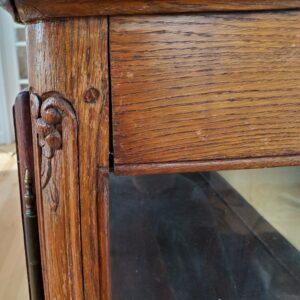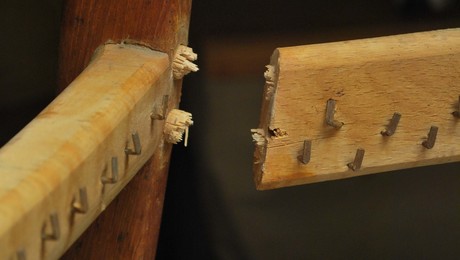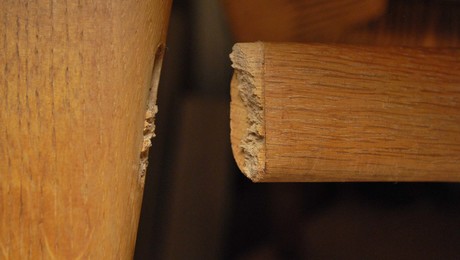STL302: Broken tenons and shattered dreams
Anissa and Ben welcome David Johnson onto the show to discuss his work repairing furniture in LA.Question 1:
From Scott:
Oh wise ones:
How do you balance your obsession with woodworking and wanting to be in the shop and real life?
Question 2:
(BTW, we whiffed answering the true intent of this question… where to learn.)
From Doug:
Ben,
A number of times on the podcast you have referred to the fact that you had done a fair amount of furniture repair in the past. You have also said that it was often instructive in learning the joinery techniques in a lot of furniture.
I have an old (90-110 yrs) Duncan Phyfe style music chair with harp on the back rest that recently developed a split in the wood in the front leg just before it joins the side rail. I do not think it is an original DF piece, but it does have sentimental value having been in my great grandparents’ home (with two more generations behind me!). I was looking to see how best to approach fixing it, and found a number of approaches on line, some of which seemed fairly suspect. One individual was using clamps as spreaders to simply “pop” the joints.
The point is that there does not seem to be a lot of reliable information on how best to approach furniture repair out there. This is particularly true when it comes to older pieces that may have different construction/glues that may have been used. I don’t aspire to be a conservator, but it would be nice for hobbyist woodworkers to know how to approach such repairs in a way that is sound and does not degrade either the function, looks, or potential value of a piece long term. A recommendation as to a good book or YouTuber would be appreciated. As woodworkers, it seems that it behooves us at times not only to create, but preserve quality workmanship from the past.
I am a long time listener to the podcast, and felt this would be a potential topic for discussion, or even a guest with some expertise who could address this issue and point to some good sources of information. I love the the podcast and look forward to each episode.
Question 3:
 I recently bought a beautiful French antique china cabinet. After what we believe to be a couple of hundred years and some travel, the drawbored mortise and tenon joints have become loose (picture attached).
I recently bought a beautiful French antique china cabinet. After what we believe to be a couple of hundred years and some travel, the drawbored mortise and tenon joints have become loose (picture attached).
I’d like to restore the piece, but a new peg won’t bring the worn drawbores tight again because of the wear on the holes in the tenon. How would you all deal with it? Making the round hole larger and creating new pegs may not leave enough material on the tenon piece.
Other possibilities I’ve considered include:
Making the round holes and pegs square as an opportunity to re-fit them
Filling the tenon holes and redrilling (I don’t think this will work well)
Last and certainly least, forgetting the drawbore altogether and joining using epoxy, then filing the peg holes superficially.
Every two weeks, a team of Fine Woodworking staffers answers questions from readers on Shop Talk Live, Fine Woodworking‘s biweekly podcast. Send your woodworking questions to [email protected] for consideration in the regular broadcast! Our continued existence relies upon listener support. So if you enjoy the show, be sure to leave us a five-star rating and maybe even a nice comment on our iTunes page.


























Log in or create an account to post a comment.
Sign up Log in